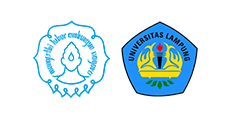The Development of Video Learning to Deliver a Basic Algorithm Learning
Abstract
Keywords
Full Text:
PDFReferences
Alessi & Trollip. Stephen M. Alessi & Stanley R. Trollip. (2001). Multimedia for Learning Method And Development. Massachusetts: Alin and Bacon.
Analysis, C. N., & Ala-mutka, K. (n.d.). PROBLEMS IN LEARNING AND TEACHING PROGRAMMING - a literature study for developing visualizations in the Codewitz-Minerva project, 1–13.
Cheppy Riyana. (2007). Pedoman Pengembangan Media Video. Jakarta: P3AI UPI
Devaney, T. A. (2009). Impact of Video Tutorials in an Online Educational Statistics Course, 5(4), 600–608.
Isiaka, Babalila. (2007). Effectiveness of video as an instructional medium in teaching rural children agricultural and environmental sciences. International Journal of Education and Development using Information and Communication Technology (IJEDICT), 2007, Vol. 3, Issue 3, pp. 105-114.
Kay, R. (2012). Exploring the use of video podcasts in education: A comprehensive review of the literature. Computers in Human Behavior, 28, 820--831.
Khan, Fazzlijan Mohamed Adnan & Mona Masood, The Design and Development of a Multimediaassisted Mastery Learning Courseware in Learning of Cellular Respiration. Jurnal. Malaysia: International Conference on Computing and Informatics, ICOCI 2013.
Mendoza, G. L. L., Caranto, L. C., & David, J. J. T. (2015). Effectiveness of Video Presentation to Students ’ Learning, 5(2), 81–86. https://doi.org/10.5923/j.nursing.20150502.07
Milne, I., & Rowe, G. (2002). Difficulties in Learning and Teaching Programming — Views of Students and Tutors, 55–66.
Reiss, N., Diestmann, G., Inkermann, D., Albers, A., & Vietor, T. (2017). Understanding Design Methods - Using Explanatory Videos for Knowledge Transfer in Engineering Disciplines, 60, 518–523. https://doi.org/10.1016/j.procir.2017.01.033
Sarker, S., & Nicholson, J. (2005). Exploring the Myths about Online Education in Information Systems, 8.
Tantri, Dani Widya. (2015). Pengembangan Media Pembelajaran Pemrograman Dasar Berbasis Film Animasi untuk Anak Usia Sekolah. Skripsi. Yogyakarta: Universitas Gadjah Mada.
Whatley, J., & Ahmad, A. (2007). Using Video to Record Summary Lectures to Aid Students ’ Revision, 3.













